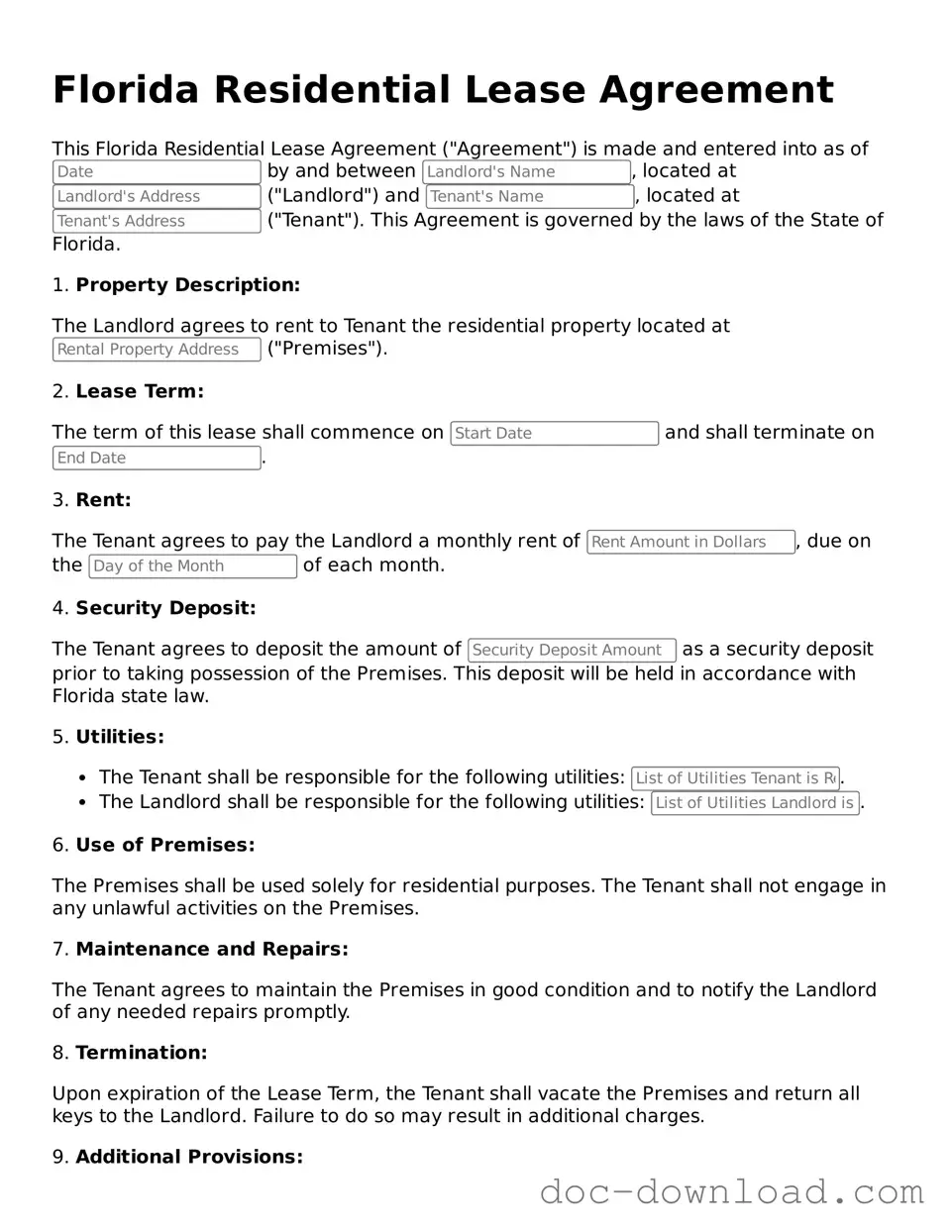The Florida Residential Lease Agreement is akin to the Commercial Lease Agreement, which outlines the terms for renting commercial property. While both documents cover essential elements like rent amount, duration, and responsibilities, the commercial lease often includes additional clauses specific to business operations. These may address issues such as zoning regulations, maintenance responsibilities, and the potential for lease renewal, reflecting the different nature of commercial versus residential properties.
To facilitate your vehicle sale, consider utilizing a structured form, such as this thorough motor vehicle bill of sale template that ensures all aspects of the transaction are adequately covered. Completing a precise record is critical; you can find more information by visiting the essential motor vehicle bill of sale resource.
Another similar document is the Month-to-Month Rental Agreement. This type of agreement allows tenants to occupy a rental unit without a fixed term. Like the Residential Lease Agreement, it specifies rent and obligations but offers more flexibility. Either party can terminate the agreement with proper notice, making it suitable for those who may not want a long-term commitment.
The Sublease Agreement is also comparable, as it allows a tenant to rent out their leased property to another individual. This document includes terms about the subtenant's rights and responsibilities, similar to those found in the Residential Lease Agreement. However, it typically requires the original tenant to remain liable to the landlord, adding another layer of complexity to the arrangement.
A Rental Application is another related document. While not a lease itself, it is often used in conjunction with the Residential Lease Agreement. This application collects information about potential tenants, such as employment history and creditworthiness. It serves as a screening tool for landlords to assess whether a prospective tenant is a good fit for their property.
The Lease Addendum is similar in that it modifies the original lease agreement. This document can address specific issues not covered in the main lease, such as pet policies or additional fees. Both the addendum and the Residential Lease Agreement must be agreed upon by both parties, ensuring that all terms are clear and enforceable.
The Purchase Agreement is another document that shares similarities, particularly when a tenant is interested in buying the property they are renting. This agreement outlines the terms of sale, including price and contingencies. Like the Residential Lease Agreement, it details the rights and obligations of both parties, but it focuses on the transfer of ownership rather than the rental arrangement.
The Eviction Notice is a critical document that, while serving a different purpose, relates closely to the Residential Lease Agreement. This notice is issued when a tenant violates lease terms, such as failing to pay rent. It specifies the reasons for eviction and the timeframe for the tenant to respond, emphasizing the importance of adhering to the lease terms.
The Lease Termination Agreement is similar in that it formalizes the end of a rental relationship. This document outlines the conditions under which the lease is terminated, whether by mutual consent or due to a breach. Like the Residential Lease Agreement, it ensures that both parties understand their rights and responsibilities as they part ways.
The Roommate Agreement is another document that can be compared to the Residential Lease Agreement. When multiple tenants share a rental unit, this agreement outlines each roommate's responsibilities regarding rent, utilities, and common areas. While the Residential Lease Agreement governs the landlord-tenant relationship, the Roommate Agreement focuses on the dynamics between the tenants themselves.
Lastly, the Lease Renewal Agreement bears similarities as it extends the duration of the original lease. This document outlines the new terms, such as rent adjustments or changes in responsibilities. It ensures that both parties agree to continue the rental arrangement under modified conditions, reflecting the ongoing relationship established by the initial Residential Lease Agreement.
